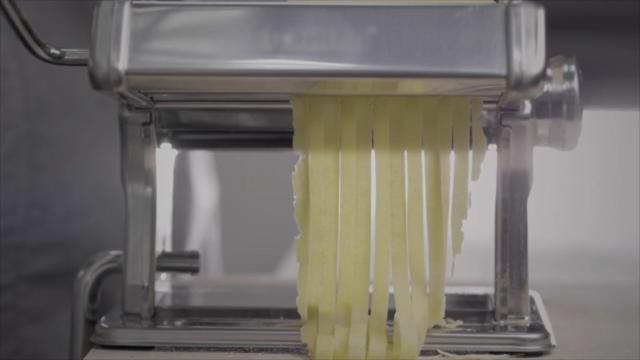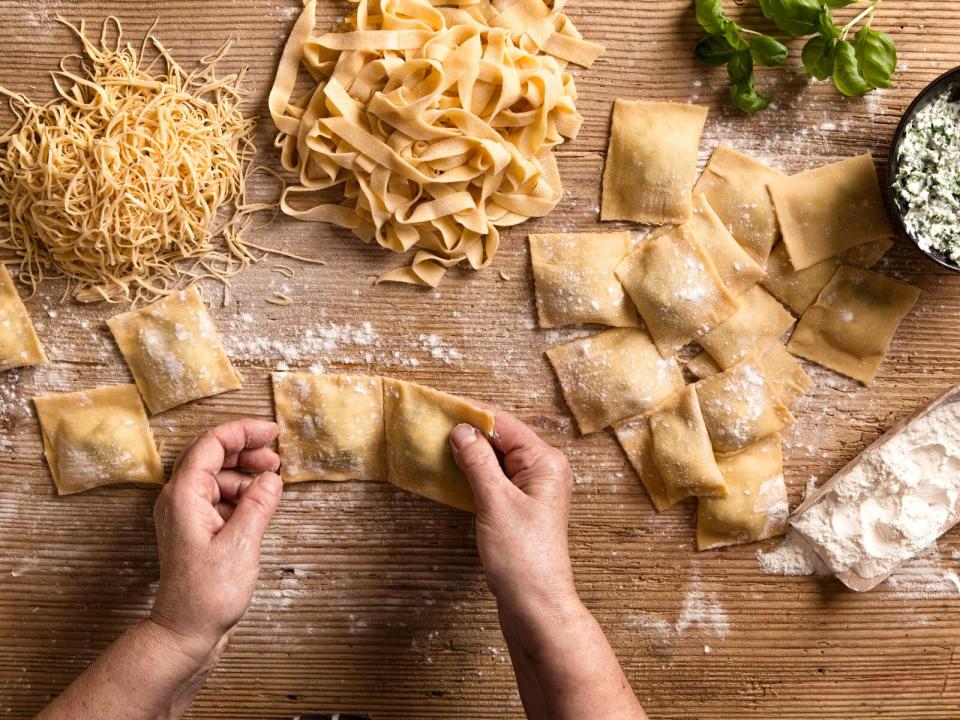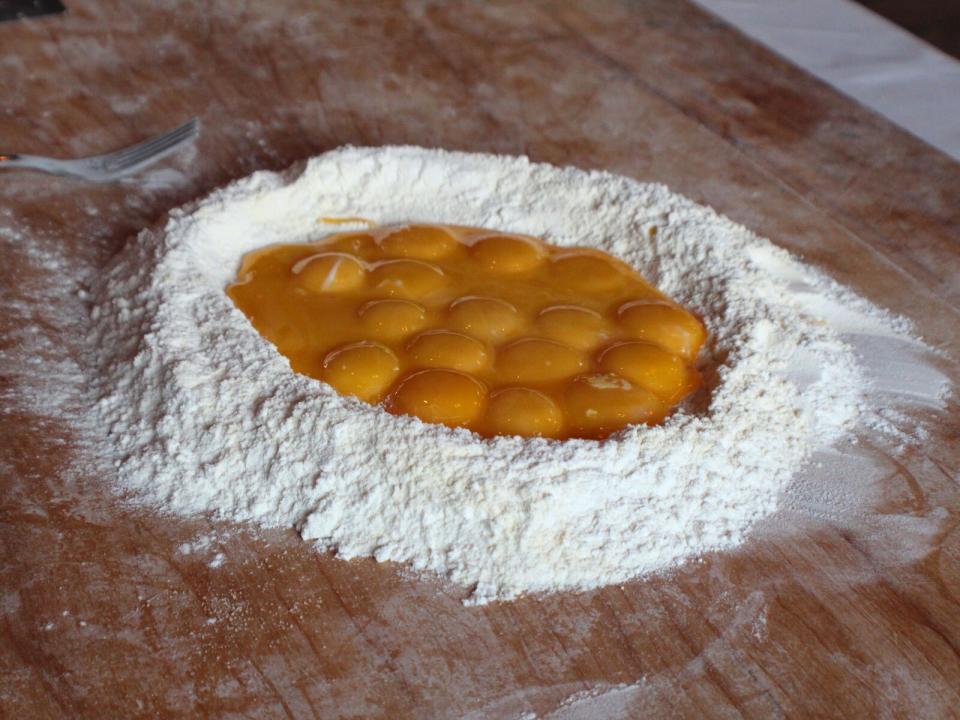Foolproof Tips for Making Fresh Pasta at Home, According to an Award-Winning Chef

To Jeff Michaud, executive chef of Philadelphia's Osteria, food is intertwined with family. After falling in love with Italian cuisine while working under Marc Vetri at the famed chef's eponymous restaurant, Michaud moved to Bergamo in northern Italy to hone his skills at butcher shops and Michelin-starred restaurants. "The cuisine was refined but rustic at the same time, the people were very welcoming and treated me as I was part of their family," he says.
Now, over a decade later, the James Beard Award-winning chef lives in Philadelphia with his wife, Claudia—whom he met in Bergamo—and their daughter, working under the Vetri Family umbrella at Osteria.

Alle12 / Getty Images
Related: Make Pasta Like a Pro, Starting with These Three Shapes
The chef's time in Italy left him with more than techniques and even a life partner — it sparked a deeper understanding of the Italian ethos surrounding food, family and culture. He holds a particular reverence for Claudia's mother, who he fondly refers to as Mamma Pina. "She taught me an appreciation of fresh ingredients," he says. "And she taught me how food brings people together. I didn't come from a family where we sat at the dinner table every night, but in Italy, it's part of the culture." When Mamma Pina visits from Cene, a small town outside Bergamo, the two share recipe ideas and teach cooking classes together, and his mother-in-law helms a yearly northern Italian Christmas dinner at Osteria.
Paying homage to the osterie of northern Italy, Osteria's menu is a roundup of thin-crust pizzas, rustic dishes like whole-roasted duck and rib-eye Fiorentina for two, and handmade pasta extruded or sculpted into various shapes and sizes. There's bucatini, candele, garganelli, rigatoni and ravioli, just to name a handful — the sauces and preparations differ, but the paper-thin dough is a constant. Dried pasta is, of course, quicker and easier when you're preparing a meal, but there are advantages, says Michaud, that go beyond taste. "The number one benefit is it's something you can do with your family," he says. "You can bring your family together in the kitchen, roll things out, it doesn't matter if it comes out a perfect square, a rectangle, or a triangle, it matters about the smiling face on your six year old daughter."
Related: 12 Italian Dishes Everyone Should Know How to Make, According to Chefs
Below, the chef shares his foolproof tips for making hand-rolled pasta—and gathering the family—at home.
Making the Dough

Courtesy of Osteria
Michaud says it's crucial to make sure you're using the right dough for the right pasta, and consistency is key. "If you have too wet of a dough, it'll be really hard to roll, very sticky," he says. For a versatile dough that can be used to make ravioli, fettuccine, pappardelle, lasagna sheets, tagliolini, cannelloni, and more, he says to use 500g 00 flour (an uber-refined wheat flour) mixed with 400-450g egg yolks, then mix the dough until it forms a nice smooth ball and wrap it in plastic before rolling it out.
Rolling the Dough
When you start rolling out the dough, pay attention to how much flour you're using. "At this point, your dough is the perfect hydration, but if you keep adding flour when you're rolling it out, the more flour you use, the drier the dough will be," he warns. If the dough is mixed right, you shouldn't have any problems with holes or tears." Once you get a feel for the dough, don't be afraid to break it."
If you're using a machine to roll the dough, make sure there are no creases. "Make sure the dough doesn't roll over itself when it goes through the machine," he says. "That will create creases in it, and won't make for a good seal. When you go to fill it for a ravioli, there's more of a chance that the filler will pop through." Just roll it through again to remove any creases.
Michaud also coaches his students to make the dough super thin. "I want to be able to read a newspaper through the dough underneath." This makes for pasta with a "little bit of a bite, but a tender feel to it."
Filling the Dough

Courtesy of Osteria
If you're making ravioli, Michaud says to fold the dough in half, cut the corner at the halfway mark, then open the dough back up and put a towel down on one side of it so it doesn't dry out as you fill one side.
"Most people wipe the pasta dough down with egg wash to seal it; to me that's a no-no," he says. "When egg cooks, it causes more of a bite into the pasta, and I want it to be nice and silky." Instead, the chef uses water. "I give it a light little spray. I don't even spray on the pasta; I spray it up in the air so it falls on the pasta." Make sure to get all the air out of the ravioli when pressing it, he says, otherwise they'll blow up when they're in the water.
Cooking the Pasta
Michaud freezes his pasta before cooking it. "I let them sit out for about 10 to 15 minutes, so they dry a little bit. They will get a little bit of a bite, but not much, and then I freeze them." He says they'll last for a week in the freezer, and when you're ready to cook them, put them right from the freezer into boiling, salted water — 2 to 3 minutes for smaller ravioli, and 4 to 5 minutes for larger dumplings.